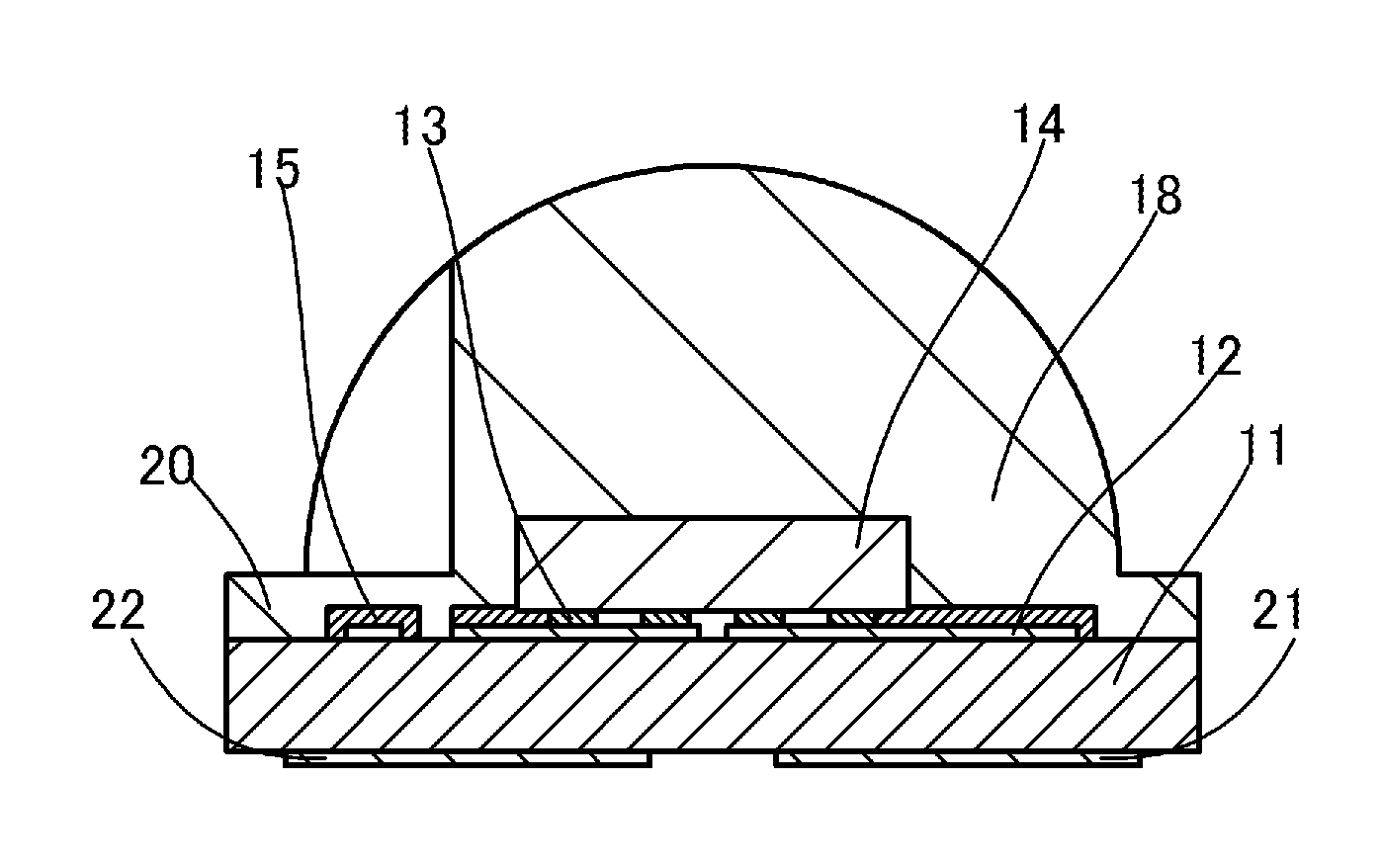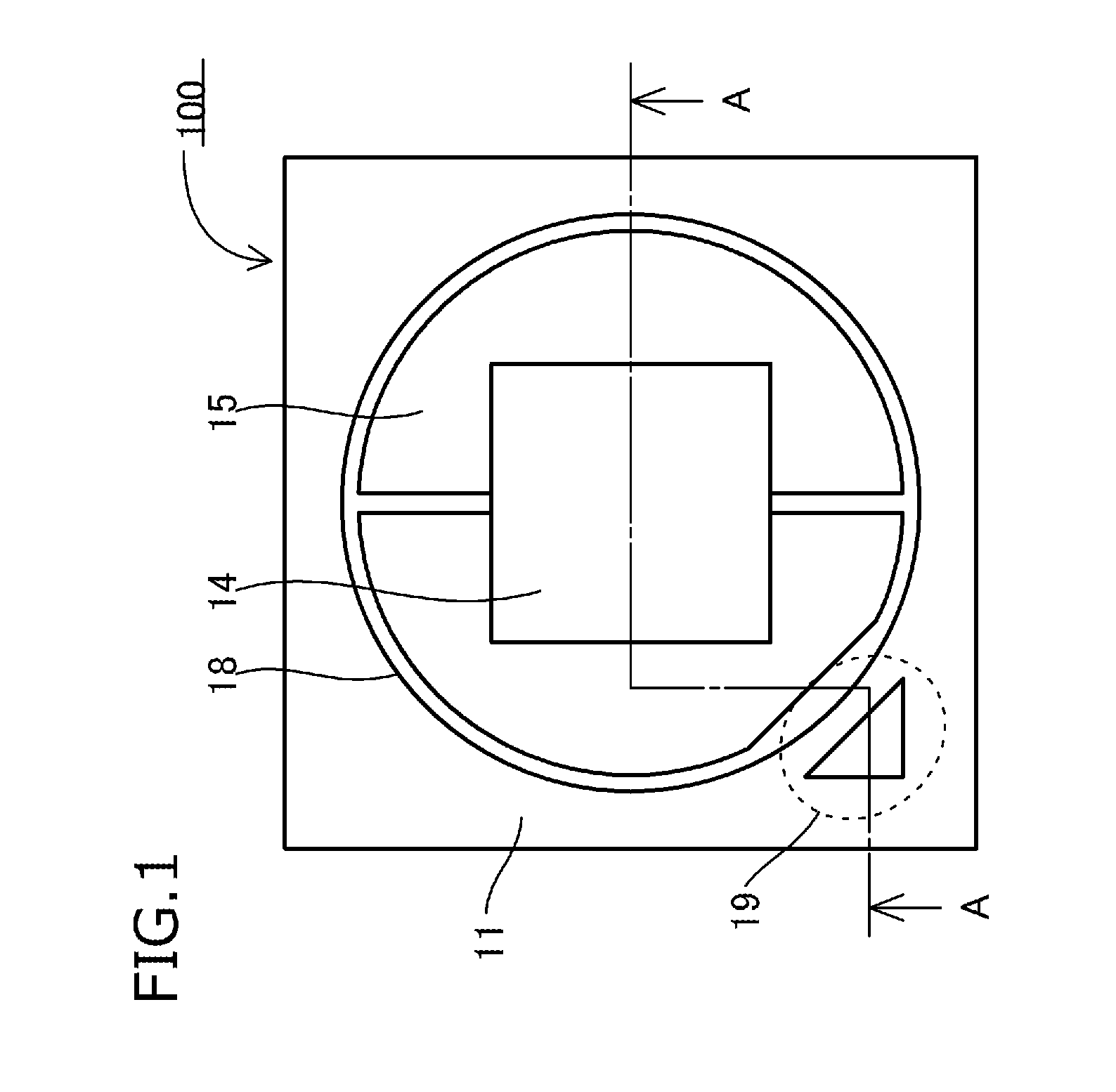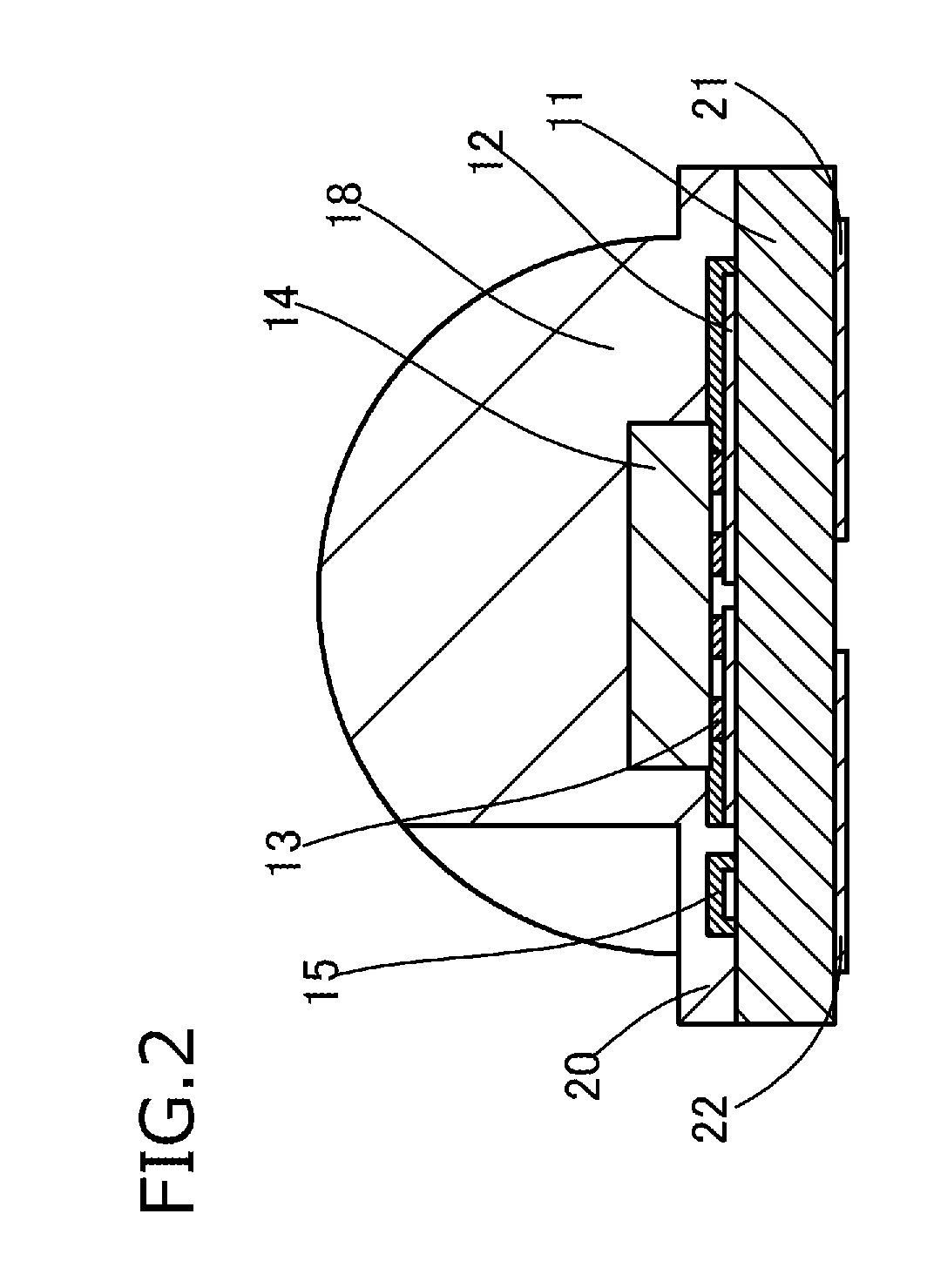Light-emitting device
a technology of light-emitting devices and light-emitting components, which is applied in the direction of semiconductor devices, semiconductor/solid-state device details, electrical devices, etc., can solve the problems of mark not being recognized during visual recognition or digital recognition, and achieve the effect of reducing the amount of sulfur
- Summary
- Abstract
- Description
- Claims
- Application Information
AI Technical Summary
Benefits of technology
Problems solved by technology
Method used
Image
Examples
first example
[0065]Next, a light-emitting device according to a first example will be described. The light-emitting device according to the first example is one example of the light-emitting device 100 according to the first embodiment, and aluminum nitride is used for the support body 11, and Au (gold) is used for the recognition target portion 19, and titanium oxide is used for the insulation layer 15. In the light-emitting device according to the first example, when it is assumed that the peak wavelength of the light emitted to the support body 11 and the insulation layer 15 during performing visual recognition or digital recognition is 450 nm, the reflectivity of aluminum nitride at the peak wavelength is 10 to 40%, and the reflectivity of Au is 30 to 60%, and the reflectivity of titanium oxide is 80 to 98%. Accordingly, in the light-emitting device according to the first example, the reflectivity of the recognition target portion 19 may become lower than the reflectivity of the support body...
PUM
 Login to View More
Login to View More Abstract
Description
Claims
Application Information
 Login to View More
Login to View More - R&D
- Intellectual Property
- Life Sciences
- Materials
- Tech Scout
- Unparalleled Data Quality
- Higher Quality Content
- 60% Fewer Hallucinations
Browse by: Latest US Patents, China's latest patents, Technical Efficacy Thesaurus, Application Domain, Technology Topic, Popular Technical Reports.
© 2025 PatSnap. All rights reserved.Legal|Privacy policy|Modern Slavery Act Transparency Statement|Sitemap|About US| Contact US: help@patsnap.com



